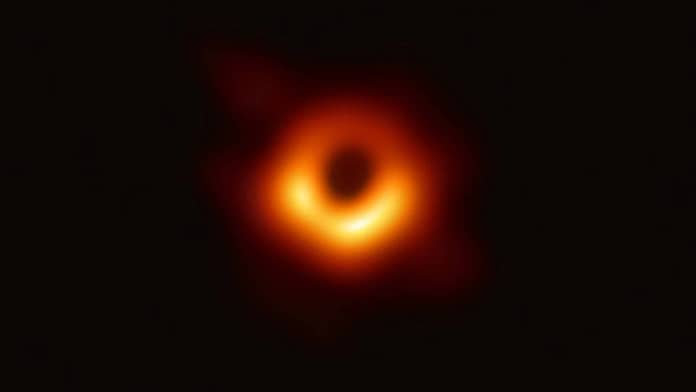Berlin.“Space, endless spaces, it’s the year 2200.” When the American science fiction series “Spaceship Enterprise” premiered on German screens 50 years ago – on May 27, 1972 – it wasn’t just special effects that set the standards.
Read more after the announcement
Read more after the announcement
There were women on the command bridge, black and Asian space heroes, a strange mastermind alien and a captain with a booming punch. The series (originally “Star Trek”) was already living in variety at the time of counselor Willy Brant.
The adventure has already been shown in the United States five years before its launch in Germany. After that, ZDF did not go on air with Episode 1, but with Episode 19: “Tomorrow is Yesterday” (“Tomorrow is Yesterday”) is about time travel – a common theme in the “Star Trek” universe. But how realistic is that in the real world?
Time travel in “Star Trek”
At the start of the movie Tomorrow is yesterday, the Enterprise ship is towed with a black star and pulled from the 23rd century to 1969. Physicist and science fiction bird Sacha Vogel says of the time travel idea: “It doesn’t work that way. According to the current scientific state No chance.” The fact that an organization can be attracted by a phenomenon like a black hole is consistent with physical reality. But: “There is no reason to go back in time spontaneously.”
Read more after the announcement
Read more after the announcement
By the way, in the episode “Star Trek” there is a talk about a black star. Before the term black hole appeared in science, dark stars were also talked about. Vogel hypothesizes that a black star means a black hole.
The science behind it
Black holes are well known in astrophysics: a massive star collapses into a black hole as it dies, pulling everything close to it. The inner mass is so tightly compressed that even light, traveling at about 300,000 kilometers per second, cannot escape.
Nobody knows exactly what happens inside a black hole. Current theories state that space and time no longer play a role. “There is no longer a way to exchange information,” says Vogel. “If light can no longer leave the black hole, we cannot communicate or even exchange command.”
Back to the Enterprise: Arriving in the past, the crew learns via a radio signal that they are in 1969, shortly before the first moon landing. Curiosity: Since the episode wasn’t broadcast in Germany until 1972, the exact time of the first manned moon flight on July 16, 1969 can be mentioned in translation, as opposed to the broadcast date in the United States as early 1967.
Read more after the announcement
Read more after the announcement
New ways in the world of science fiction
The Captain Kirk spacecraft actually lands on USAF radar. A pilot tasked with intercepting the Enterprise as a flying object is released onto the plane before his fighter plane crashes. Kirk keeps it in the ship. His concern: The man’s return could spoil the schedule. Wrong, as it turns out: Man must return to Earth safely because his unborn son will lead the first manned expedition to Saturn.
Here “Star Trek” leaves the trails of other science fiction works. In the “Back to the Future” movie series, for example, the filmmakers toy with the fact that the past can and sometimes must influence the future. So their hero Marty is careful not to meet relatives or himself in the future.
It’s different with Star Trek. The pilot was later sent specifically to the point where he first saw the enterprise. He redeemed himself in the past, was sent to his old body, never experiencing the act that the viewer saw. So he can’t meet himself either. “Both are impossible,” Vogel judges about the time-travel variants of “Star Trek” and “Back to the Future.”
Time delay – a real phenomenon
A phenomenon somewhat similar to time travel exists in our physical world: time dilation. This states that in a fast rocket, for example, time is perceived as longer. Expert Vogel explains: “Moving clocks run slower.” The effect can also be measured using atomic clocks in the jets. But this is a far cry from enterprise time travel.
Read more after the announcement
Read more after the announcement
At the end of the episode, the spaceship and its crew finally return: the Enterprise is flying around the Sun at high speed, thus returning to the 23rd century. In space travel, it actually makes sense to circumnavigate heavy planets using swing maneuvers (also known as gravity assist).
Probes, for example, orbit a large planet and are given extra momentum by the gravitational forces of a large object and thus can accelerate out of the solar system. “Of course, this has nothing to do with time travel,” Vogel says.
In order for us to implement the scenario from Episode 1 “Star Trek”, the laws of physics must be bypassed. Enterprise travels through time at multiple detour speeds in a round trip. “Memory Alpha” from the Star Trek Wiki defines convolution as “faster than the speed of light”.
Regardless of Einstein’s theory of relativity, according to which nothing can travel faster than light, this would be the theoretical key. Physicist Vogel explains: “In a system faster than the speed of light, almost anything is possible.”
RND / dpa

